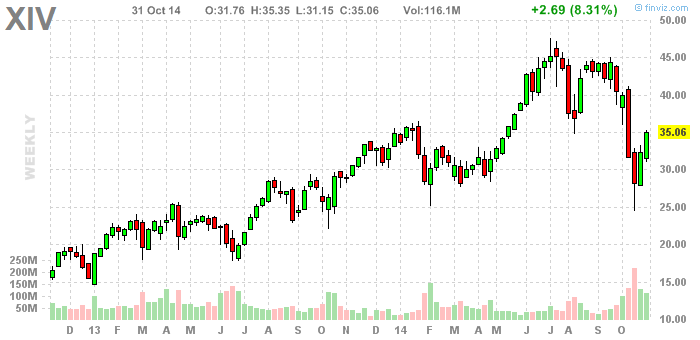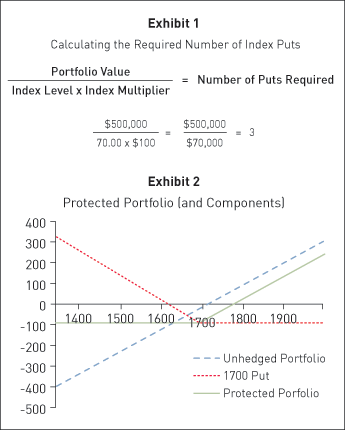Using Put Options to Protect Your Portfolio
Post on: 16 Март, 2015 No Comment

A s options are a fairly sophisticated method of investing/speculating, I rarely write about them as Im a big believer in sticking with the basics. However, with the expectation of some sort of market correction between now and October 2010, Ive had thoughts on ways to hedge a portfolio to reduce the potential for loss.
One way to protect a portfolio is to purchase insurance in the form of put options. What is a put option? If you recall our detailed series on how call options work . put options are the opposite. Where buying a call option allows an investor the option to purchase a stock at a particular strike price, a put option allows the investor the option to sell a stock at a particular strike price. Basically, it allows the investor to bet that the underlying asset is going to depreciate.
An Example of Put Option Hedging
The best way is to explain this concept is with an example. In this case, lets take a look at the Canadian stock index with the iShares ETF XIU. If you are an ETF indexer . there is a high probability that you own XIU, but how do you use puts to protect it against depreciation in the event of a market meltdown?
If I go to my online stock brokerage console . I see that XIU currently trades at around $17.75 (May 17th, 2010). If I go to the options quotation section of my account, I see listings for various XIU put options at specific strike prices and associated premiums. Of course, the higher the strike price, the higher the premium and vice versa.
In this case, say I buy a 5 x Sept 2010 put option contracts for $1 with a strike price of $18.00. As each contract represents 100 shares, out of pocket, this means I purchased $500 (5 contracts x $1 premium) worth. If the market does the double dip recession as many perma bears are predicting, XIU would approach the $13 mark. What does this mean for the put option?
As I purchased $500 worth of insurance, and the market corrects significantly, the insurance would pay out handsomely. In this example, lets assume that XIU is worth $13 on expiry (3rd Friday in Sept 2010). What kind profit would I have?
(Strike price current stock price premium + time value of shares) x 100 x number of contracts

As were selling at expiry, the time value would be $0. Doing the calculations, it would be:
($18 $13 $1) x 100 x 5 = $2,000 (400% return on investment)
In case your wondering, XIU would need to close below $17 (strike price premium) before the Sept expiry in order to be in the money or profitable. The investor can sell the option itself at any time before (or on) expiration without purchasing the underlying shares (as most do).
What is the risk? If the markets are higher (or around the same price) by the time expiry rolls around, youll lose 100% of your option investment, or $500 in this case. However, is that a bad thing? It simply means that the underlying index is still strong, and that your insurance was not used.
Do you use options to hedge your portfolio? If not, do you use other strategies?














